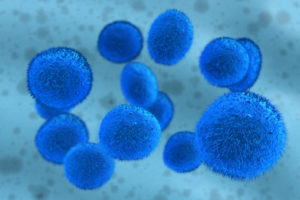The City of Hope National Medical Center in California performs nearly 400 autologous stem cell transplants (ASCT) per year using mobilized peripheral blood stem cells (PBSCs), and they have had 99.2% successful PBSC collections (>2.0X106 CD34+ cells/kg) recently. Their approach to ASCT collection is multi-pronged—incorporating patient education and nurse coordinators, careful monitoring of collection yields and laboratory tests, and the judicious use of mobilization agents including the newly approved and costly drug plerixafor. Plerixafor disrupts CD34+ cell binding causing cells to be released into the peripheral circulation, and has been shown to increase collection yields. By only using plerixafor in patients who are predicted to have poor mobilization, or by adding the drug quickly after mobilization is not successful, they have improved successful collections and decreased the number of collection days from 4.5 to 2.8 days per patient since the drug was approved in 2008. Other institutions may be able to increase successful PBSCs by adopting similar algorithms.
Reference:
Transfusion offers CME credit for this study! Log on at www.wileyhealthlearning.com/trf.

